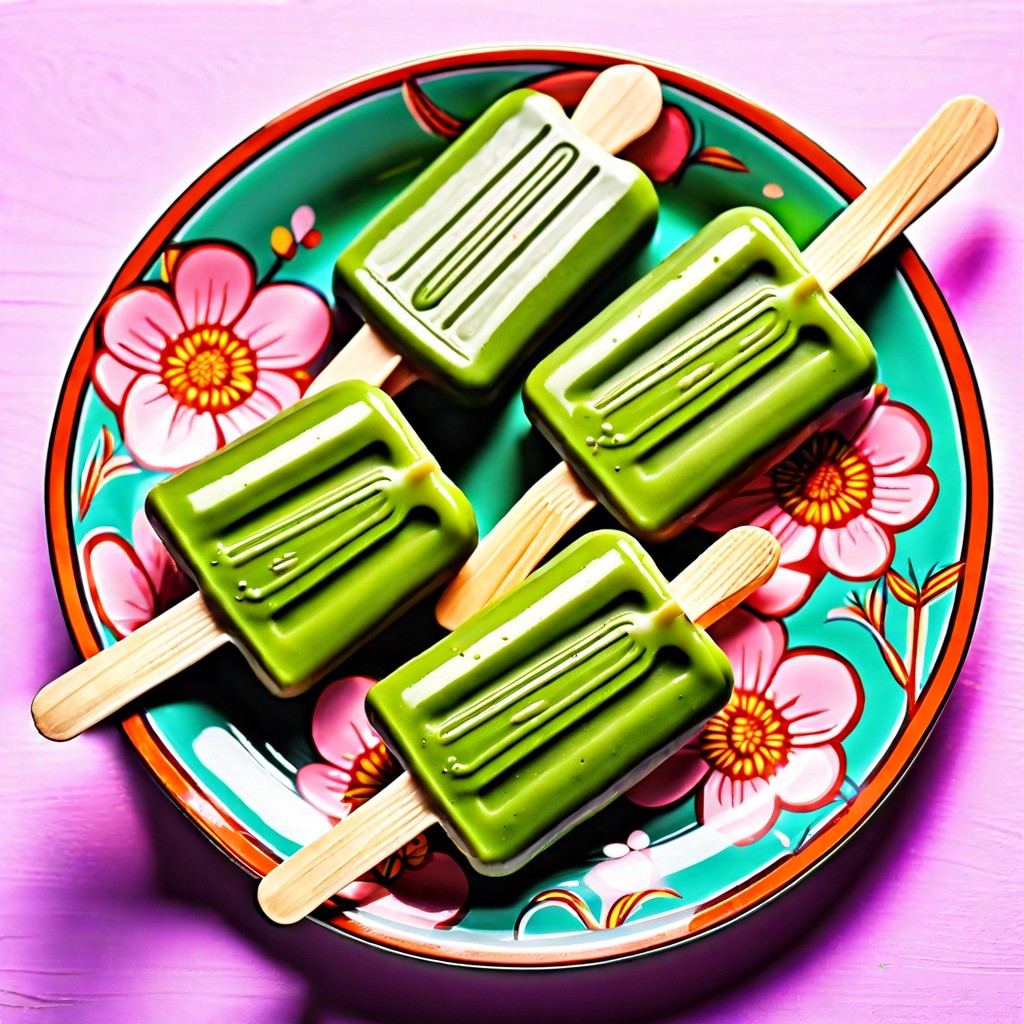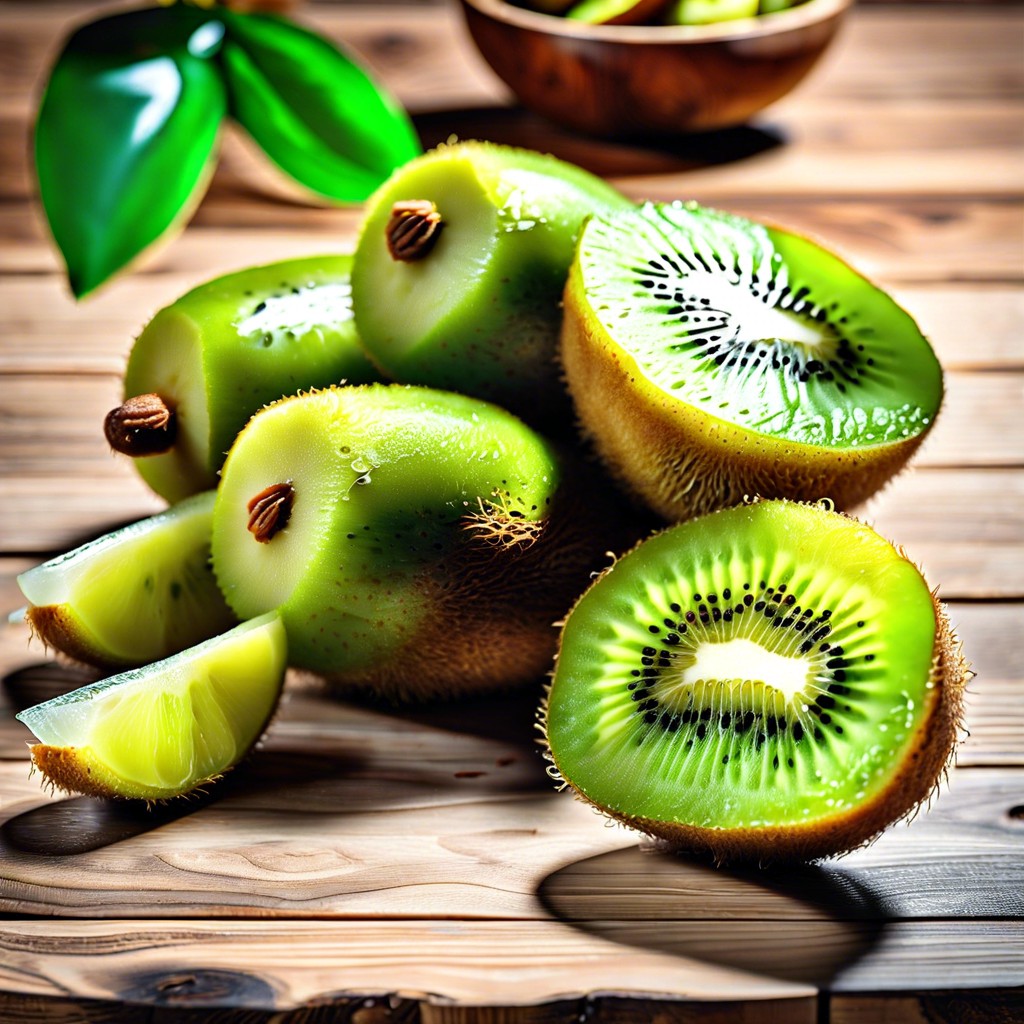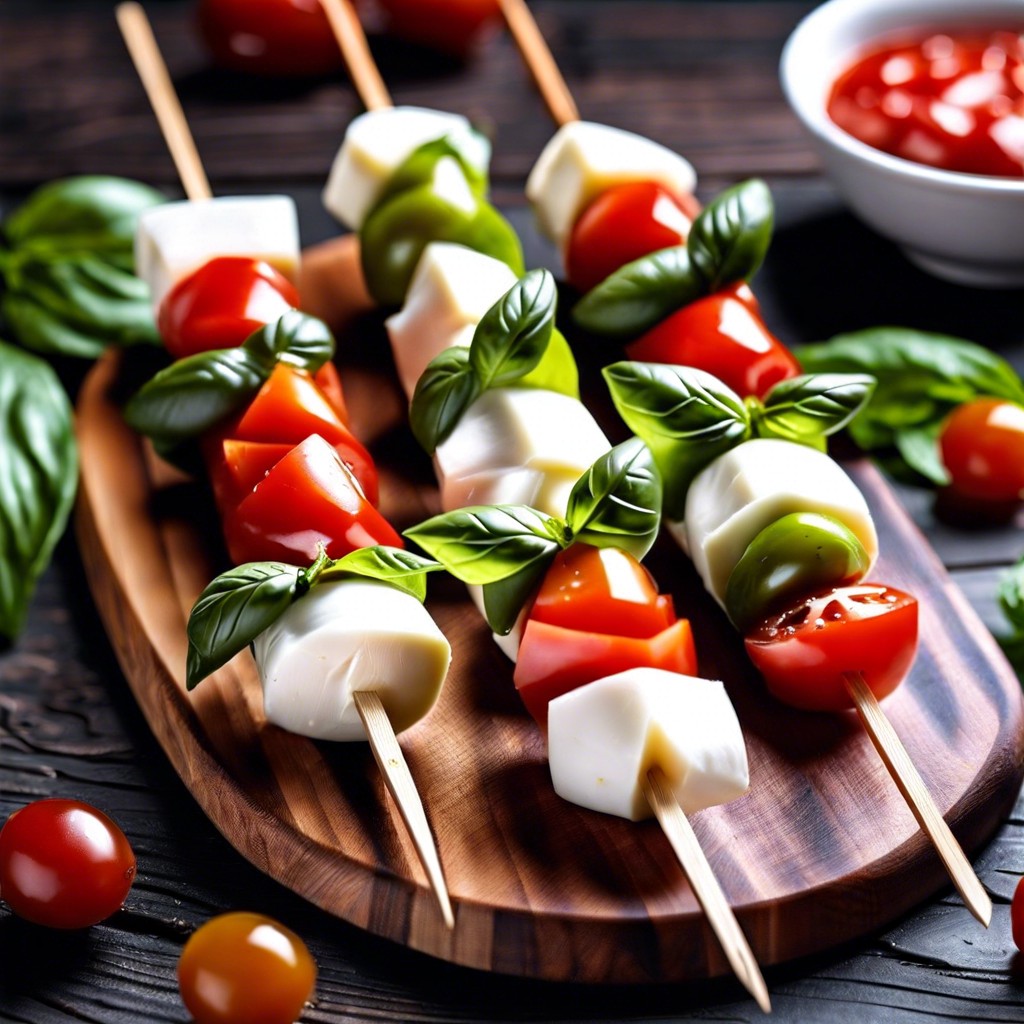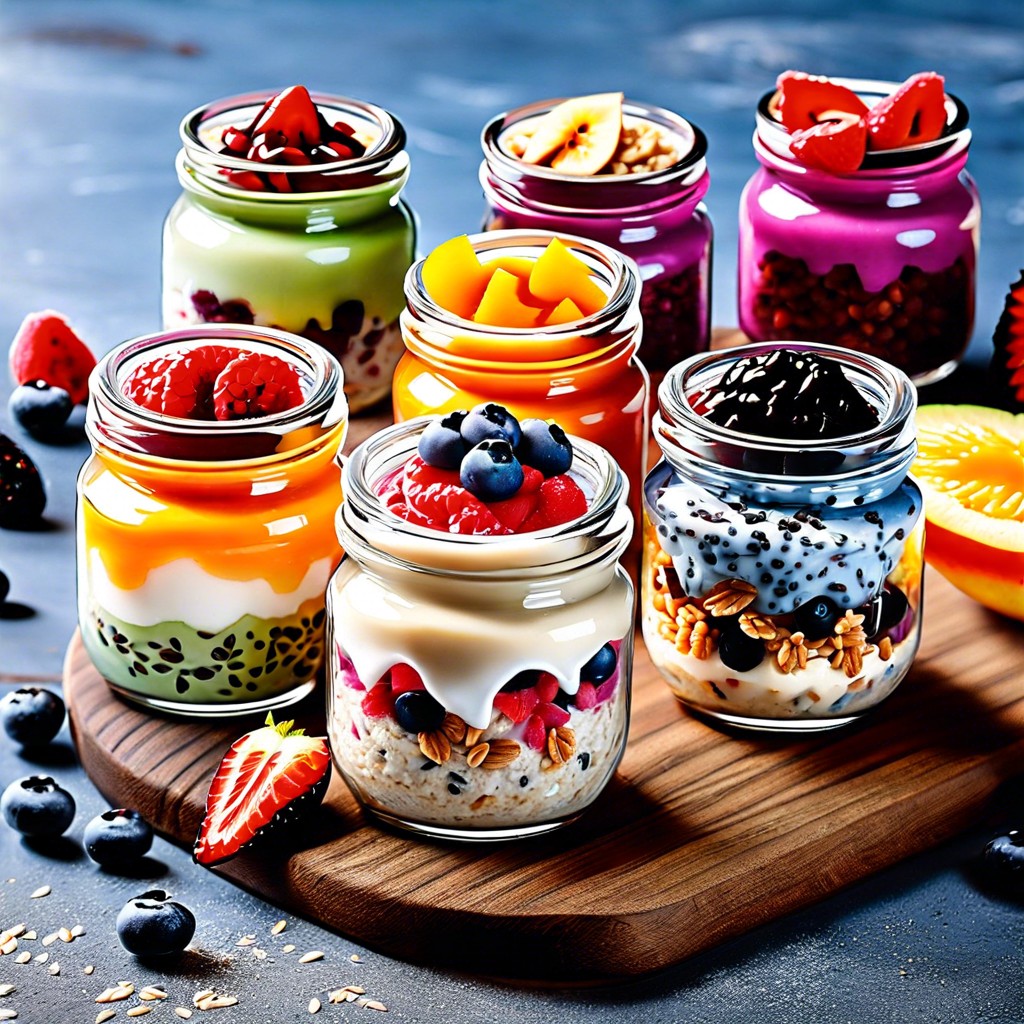A Canape Appetizer is a small, decorative finger food typically served at parties or events. It consists of a base (such as crackers or bread), spread (like cream cheese or hummus), and toppings (meat, vegetables, or seafood). These bite-sized appetizers are visually appealing and easy to eat.
Canape appetizers are a versatile and elegant addition to any party or gathering. These small, bite-sized treats can be made with a variety of ingredients and flavors, making them perfect for any taste preference.
But what exactly is a canape appetizer? In this article, we’ll explore the history of canapes, how to make them, and some delicious variations to try at your next event. So whether you’re hosting a fancy cocktail party or just looking for some new snack ideas, read on to discover all you need to know about canape appetizers!
Definition of Canape Appetizer
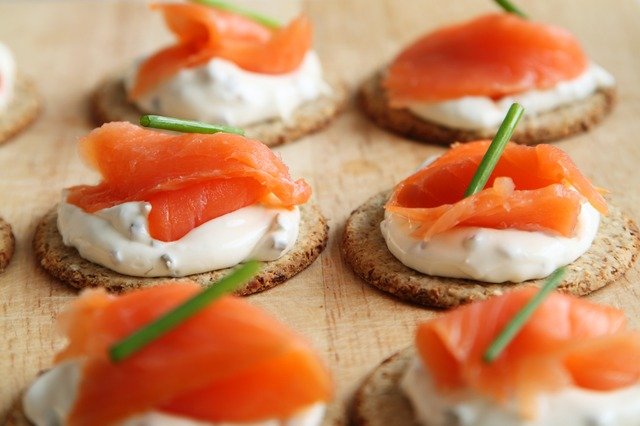
A canape appetizer is a small, decorative finger food that typically consists of a base, spread, and toppings. The word “canape” comes from the French word for sofa or couch.
In the 18th century, these bite-sized treats were served on slices of bread cut into various shapes to resemble miniature sofas or couches.
Today’s canapes are much more versatile and come in many different forms. They can be made with various types of bread or crackers as their base and topped with anything from smoked salmon to avocado mousse.
Canapes are often served at cocktail parties or other social events where guests mingle while holding drinks in one hand. These bite-sized snacks make it easy for guests to enjoy delicious food without having to sit down at a table with utensils.
History of Canapes
The word “canape” is derived from the French word “couch,” which refers to a small sofa or divan. In France, canapes were originally served as an accompaniment to drinks in cafes and bars.
The first recorded use of canapes was during the reign of Louis XV in France, where they were served at court banquets and other formal events. Canapes quickly became popular among aristocrats and high society due to their elegant presentation and delicious taste.
In England, canapés gained popularity during Victorian times when elaborate tea parties became fashionable among wealthy families. These bite-sized treats were often made with delicate bread slices topped with savory ingredients like smoked salmon or caviar.
Today, canapés are still enjoyed around the world as an appetizer for special occasions such as weddings, cocktail parties or corporate events.
Origins of Canapé
The word “canapé” comes from the French word for sofa or couch, which is fitting since these small bites are often served on decorative platters and resemble miniature pieces of furniture.
The origins of canapes can be traced back to France, where they were first served as a way to showcase luxury ingredients like caviar and foie gras. These early versions were typically made with bread or pastry as the base and topped with decadent spreads like butter or pâté.
Over time, canapes evolved into more creative combinations featuring various meats, cheeses, vegetables, fruits and seafood. Today’s modern variations include everything from smoked salmon on cucumber rounds to mini caprese skewers.
Types of Canapes
Some popular types of canapes include open-faced, closed-face, skewered or stacked canapes. Open-faced canapés are the most common type and consist of a single base topped with various spreads and toppings.
Closed-face canapés are similar to sandwiches but smaller in size while skewered or stacked Canapes involve layering ingredients on top of one another using toothpicks or small skewers.
Another type is the sweet Canape which is made from fruits like strawberries, kiwi fruit slices among others that have been cut into bite-sized pieces then placed on top of cream cheese spread over crackers.
The choice between these different types depends on personal preference as well as the occasion for which they will be served. For example, open-faced varieties may be more appropriate for formal events where guests will be seated at tables while closed-face options might work better for casual gatherings where people are standing around chatting.
Components of a Canape
The base serves as the foundation for the canape and provides a sturdy platform to hold all of the delicious toppings. Common bases include crackers, bread slices or rounds, crostini (toasted baguette), cucumber slices or even endive leaves.
The spread is what holds everything together on top of your chosen base. It adds flavor and moisture to each bite while also helping other ingredients stick in place.
Cream cheese mixed with herbs or spices is a popular choice for spreads but you could also use hummus, pesto sauce or tapenade.
Finally comes the fun part – choosing your favorite toppings! This component allows you to get creative with flavors and textures that will make each bite unique from one another. Popular options include smoked salmon topped with cream cheese & dill; prosciutto wrapped around melon balls; cherry tomatoes paired with fresh mozzarella & basil leaves; shrimp cocktail served atop avocado mousse…the possibilities are endless!
Ingredients for Canapé Appetizers
The key is to choose ingredients that complement each other and create a harmonious flavor profile. Here are some common ingredients used in canapés:
1. Bread or crackers: Choose a base that will hold up well with toppings and won’t crumble easily.
2. Spreads: Cream cheese, hummus, pesto, tapenade or any other spreadable ingredient adds flavor and texture.
3. Cheese: Soft cheeses like brie or goat cheese work well for spreading while hard cheeses like cheddar add sharpness.
4. Meat: Thinly sliced deli meats such as ham or prosciutto add saltiness while cooked chicken breast provides protein.
5. Seafood: Smoked salmon, shrimp, crab meat etc.
6. Vegetables: Cucumber slices, cherry tomatoes halved etc.
7. Herbs & spices – Fresh herbs such as basil leaves provide freshness whereas dried herbs like thyme give an earthy flavour.
Bread and Crackers for Canapés
They provide a neutral flavor that allows the toppings to shine, while also providing a sturdy base for easy handling. When choosing bread or crackers for your canapés, it’s important to consider their texture and size.
For bread, choose thin slices of baguette or rye bread that have been toasted or grilled until crispy. Avoid using thick slices of soft sandwich bread as they may become soggy when topped with spreads and toppings.
Crackers come in many shapes and sizes, from round water crackers to square wheat thins. Choose plain varieties without added flavors like herbs or cheese so they don’t overpower the other ingredients on top.
It’s also important to consider dietary restrictions when selecting your base. For gluten-free options try rice cakes instead of traditional crackers; these will hold up well under heavier toppings like meats and cheeses while still being light enough not to overwhelm delicate flavors such as seafood-based spreads.
Best Cheeses for Canapés
The cheese you select will determine the flavor and texture of your canapé appetizer. Here are some of the best cheeses for canapes:
1. Brie: This soft, creamy French cheese pairs well with sweet or savory toppings.
2. Goat Cheese: Tangy and versatile, goat cheese works well with a variety of flavors.
3. Blue Cheese: Bold and pungent, blue cheese adds depth to any canape recipe.
4. Feta Cheese: Salty and crumbly feta is perfect for Mediterranean-inspired canapes.
- Cream Cheese: A classic choice that pairs well with almost anything from smoked salmon to fruit preserves.
- Gouda: Mild in taste but rich in flavor Gouda goes perfectly on crackers or breads as a base layer
Popular Canape Recipes
There are countless variations of canape recipes, but some stand out as crowd-pleasers. Here are a few popular canape recipes that you might want to try:
1. Smoked Salmon Canapes: Top mini bagels with cream cheese, smoked salmon, capers, and dill for an elegant appetizer.
2. Bruschetta Canapes: Toasted bread rounds topped with diced tomatoes, garlic, basil leaves and drizzled with olive oil make for delicious Italian-inspired bites.
3. Deviled Egg Canapes: Cut hard-boiled eggs in half lengthwise; remove yolks and mix them up with mayonnaise or sour cream until smooth then pipe the mixture back into the egg whites before topping it off with paprika or chives.
4. Mini Quiche Lorraine: These savory pastries filled bacon bits & gruyere cheese will be sure to please any palate!
5. Cucumber Cream Cheese Bites – Slice cucumbers into rounds then top each one off with a dollop of whipped cream cheese mixed herbs like dill or parsley.
Simple Canapé Recipes
With just a few simple ingredients, you can create delicious and visually stunning bite-sized treats that will leave everyone wanting more.
One of the easiest ways to make canapes is by using pre-made bases such as crackers or bread. Simply add your favorite spread and toppings for an effortless yet impressive appetizer.
Here are some simple canape recipes that you can try at home:
1. Cream Cheese and Smoked Salmon Canapes: Spread cream cheese on top of mini bagels or crackers, then top with smoked salmon slices and fresh dill.
2. Caprese Skewers: Thread cherry tomatoes, mozzarella balls, and basil leaves onto toothpicks for a colorful Italian-inspired snack.
3. Cucumber Bites with Herbed Cream Cheese: Slice cucumbers into rounds, then spread herbed cream cheese on top before adding sliced cherry tomatoes or olives as garnish.
4. Bruschetta Toasts: Top toasted baguette slices with diced tomato mixed with garlic, olive oil, balsamic vinegar & chopped basil.
Canape Presentation Ideas
These small bites are not only meant to be delicious but also visually appealing. Here are some creative ideas for presenting your canapes:
1. Use a variety of serving platters: Different shapes, sizes, and colors of plates or trays will add interest to your presentation.
2. Play with height: Vary the heights of your serving dishes by using cake stands or tiered platters.
3. Add garnishes: Fresh herbs, edible flowers, and colorful fruits like berries make great garnishes that will enhance the look of your canapes.
4. Create patterns: Arrange different types of canapés in a pattern on a large tray for an eye-catching display.
5. Use unique vessels: Serve individual portions in shot glasses, spoons or mini bowls for added visual appeal.
6- Incorporate themes into presentations: For example if you’re hosting an event with Italian cuisine theme, use red white green colored ingredients such as cherry tomatoes, mozzarella cheese and basil leaves arranged together on top bread slices.
Canapé Serving Suggestions
These small bites are not only delicious but also visually appealing, making them perfect for any party or event. Here are some serving suggestions to make your canape appetizers stand out:
1. Use a variety of platters: Choose different shapes and sizes of platters to create an eye-catching display.
2. Add height: Use tiered stands or cake plates to add height and dimension to your presentation.
3. Garnish with herbs: Fresh herbs like parsley, basil, or chives add color and flavor while enhancing the overall look of the dish.
4. Play with colors: Mix up the colors by using different ingredients such as red peppers, green olives or yellow tomatoes in your toppings.
5. Serve on skewers: Skewer multiple components together for easy handling.
6. Use edible flowers: Edible flowers like pansies, violets etc adds beauty along with taste.
Dietary-friendly Canapes
For those who are gluten-free, using rice crackers or sliced vegetables as the base is a great option. Hummus or avocado spread with roasted vegetables on top makes for a delicious vegan canape, while smoked salmon with cream cheese and dill is perfect for pescatarians.
For those following a low-carb diet, cucumber slices make an excellent base for toppings like tuna salad or goat cheese and cherry tomatoes. And if you’re looking to cut back on dairy, try using cashew cream instead of traditional cream cheese in your spreads.
It’s important to consider the dietary needs of your guests when planning any event that includes food.
Tips for Making Canapes
Here are some helpful tips for making delicious and visually appealing canape appetizers:
1. Keep it simple: Canapes should be easy to eat in one or two bites, so keep the ingredients simple and avoid overcomplicating flavors.
2. Use fresh ingredients: The quality of your ingredients will make all the difference in taste and presentation.
3. Experiment with different shapes: Canapes don’t have to be round or square; try using cookie cutters or other tools to create unique shapes that will impress your guests.
4. Play with colors: Incorporate colorful fruits, vegetables, meats, cheeses into your canape toppings for an eye-catching display.
5. Balance flavors and textures: A good rule of thumb is to balance sweet with savory flavors while also incorporating varying textures such as crunchy crackers paired with creamy spreads.
How Many Canapés Per Person?
The answer depends on several factors such as the length of your event, time of day and whether you are serving other food items.
As a general rule, plan for 4-6 canapes per person for an hour-long cocktail party or reception. If you’re hosting a longer event that spans over two hours or more and not serving any other food items then increase this number to 8-10 canapes per guest.
It’s always better to have extra than not enough so consider adding some additional servings just in case. Also keep in mind dietary restrictions when selecting your menu options – having vegetarian and gluten-free options available will ensure all guests feel included.
Preparing Canapés in Advance
To save time on the day of your event, you can prepare some or all of your canapes ahead of time.
When preparing your canapes in advance, it’s important to consider which ingredients will hold up well over time. For example, toppings like fresh herbs or delicate seafood may not last as long as heartier meats and vegetables.
To ensure that your pre-made canapes stay fresh and delicious until serving time, store them properly. Wrap each individual piece tightly with plastic wrap or place them in an airtight container before refrigerating.
Another tip for preparing ahead is to assemble only the base (bread/cracker) beforehand then add toppings just before serving so they remain crisp and flavorful.
Storage and Shelf Life of Canapés
Canapes should be stored in an airtight container or covered with plastic wrap and kept in the refrigerator until ready to serve. Depending on the ingredients used, canapes typically have a shelf life of 1-2 days when refrigerated.
If you’re making canapes ahead of time for an event or party, it’s best to prepare them no more than one day before serving. This will ensure that they are still fresh and flavorful for your guests.
When storing canape appetizers with delicate toppings such as seafood or avocado, make sure not to stack them on top of each other as this may cause the toppings to become squished or damaged.
It is also important not leave any leftover canapés at room temperature for too long as bacteria growth could occur which could lead food poisoning if consumed later.
Canape Etiquette
First and foremost, always use toothpicks or small skewers when presenting your canapes. This makes them easier for guests to pick up and eat without getting their fingers messy.
Another important rule is not overloading the tray with too many canapes at once. It’s better to refill the tray as needed than have a crowded presentation that looks unappetizing.
It’s also essential that you consider dietary restrictions when preparing your canape appetizers. Make sure you label any dishes containing nuts, dairy products or gluten so guests with allergies know what they’re eating.
Remember that presentation is key! Arrange your Canapés on decorative platters or trays and garnish them with fresh herbs like parsley or chives for an extra pop of color and flavor.
Canapes Vs. Hors D’oeuvres
While they may seem similar, there are some key differences between the two.
Hors d’oeuvres (pronounced “or-DERV”) is a French term that translates to “outside of work.” These appetizers were traditionally served before the main course as a way to whet guests’ appetite. Hors d’oeuvres can be hot or cold and come in many different forms such as skewers, dips, spreads, and more.
Canapes (pronounced “can-a-PAY”) on the other hand have their roots in England. They consist of a base topped with various ingredients like cheese spreads or meats.
Canape bases can range from crackers to bread slices while toppings include smoked salmon mousse or roasted vegetables.
The primary difference between these two types of appetizers lies in their presentation style: hors d’ oeuvre tend to be more elaborate than canapés which usually feature simpler ingredients arranged artfully on top of bread rounds.
Canapes for Special Occasions
Whether it’s a wedding, birthday party, or corporate event, canapes add an elegant touch to the menu and impress guests with their visual appeal and delicious taste.
For weddings, canapes are often served during cocktail hour as guests mingle and wait for the reception to begin. They provide a light snack that won’t spoil dinner while adding sophistication to the overall atmosphere of the event.
Birthday parties also benefit from serving canape appetizers. These small bites allow guests to try different flavors without committing themselves too much on one dish.
Canapes offer variety in both flavor and presentation which makes them ideal for events where people have different tastes.
Corporate events such as business meetings or conferences also benefit from serving canape appetizers because they’re easy-to-eat finger foods that don’t require utensils or plates making them convenient for attendees who may be standing up while networking.
Whether you’re hosting an intimate gathering at home or planning a large-scale event like a wedding reception; incorporating Canapé Appetizer into your menu is surefire way of elevating your guest’s experience by providing them with something unique yet familiar enough not scare anyone away!
FAQ
What is in a canapé?
A canapé consists of a base (like bread or pancake), a spread (compound butter or flavored cream cheese), a main item, and a garnish.
What is the difference between a canapé and appetizer?
The difference between a canapé and an appetizer is that canapés are specifically made with an edible base like crackers or bread and served cold, while appetizers, also known as hors d’oeuvres, are small bites of food that can be either savory or sweet, and served hot or cold.
What are examples of canapés?
Examples of canapés include crostini, bruschetta, cracker-based canapés, blini (small pancake), and pastry shell canapés.
What are the 3 types of canapés?
The three types of canapés are: 1) Base (e.g. loaf bread), 2) Spread, and 3) Garnish.
How do you prepare an appealing presentation of canapés for a party?
To prepare an appealing presentation of canapés for a party, artistically arrange a variety of visually striking and delicious canapés on an elegant platter, garnished with complementary herbs or edible flowers.
What types of bread or crackers can be used as bases for canapés?
Types of bread or crackers suitable for canapés include baguettes, pumpernickel, melba toast, and whole wheat crackers.
Are there any vegetarian or vegan-friendly canapé options?
Yes, numerous vegetarian and vegan-friendly canapé options are available, such as vegetable skewers, hummus and vegetable pinwheels, and stuffed mushrooms.
